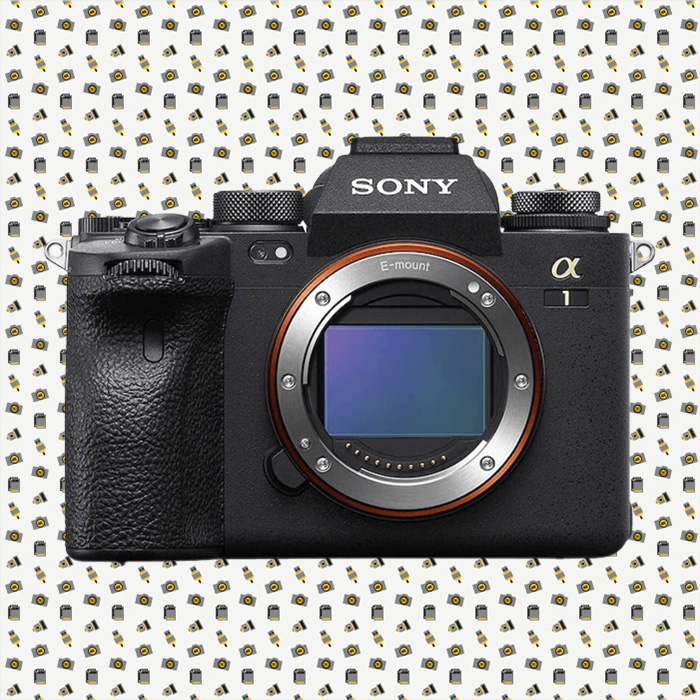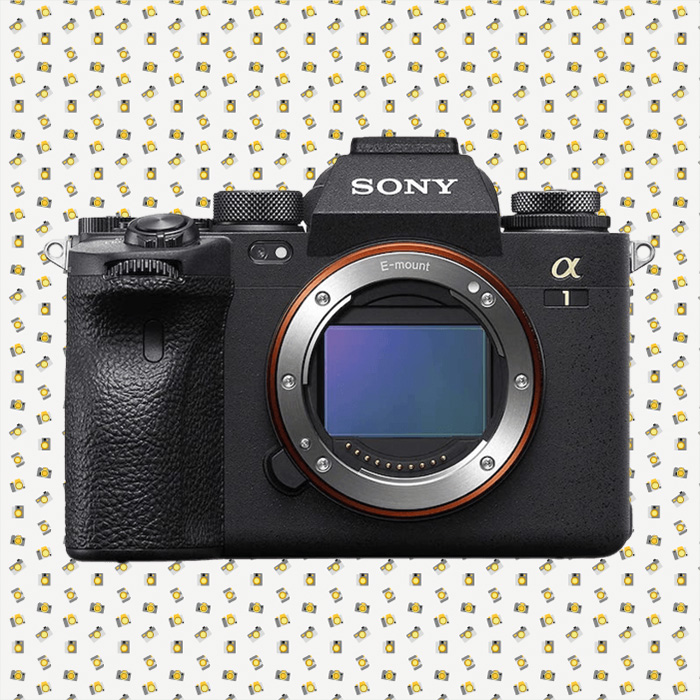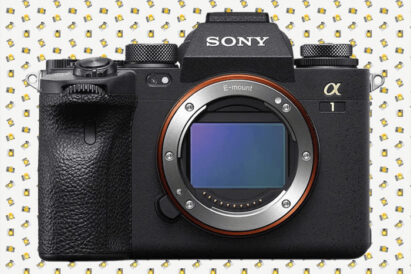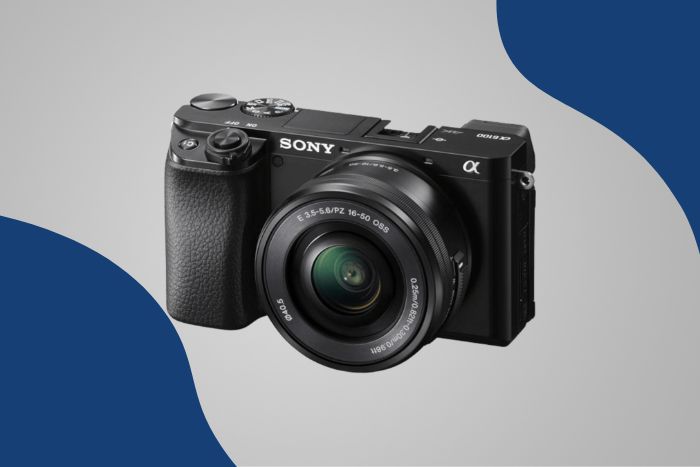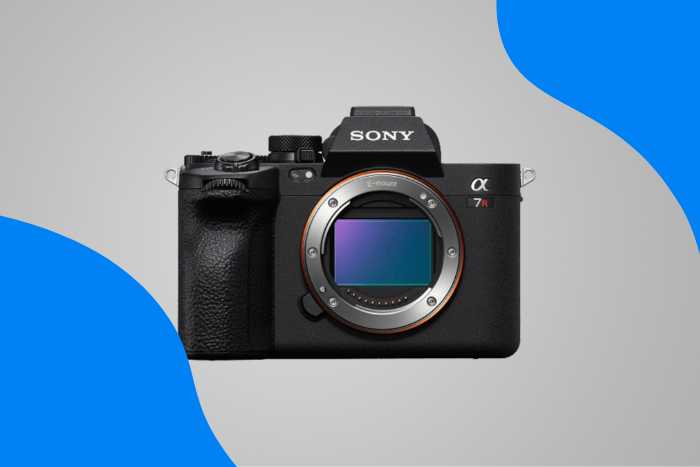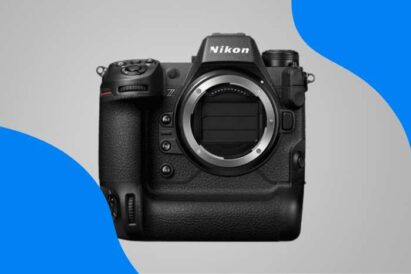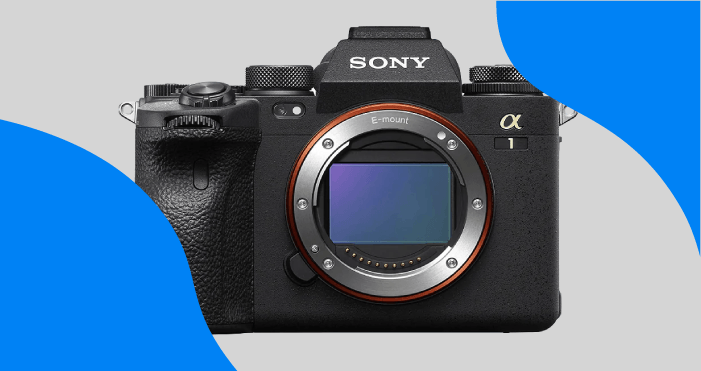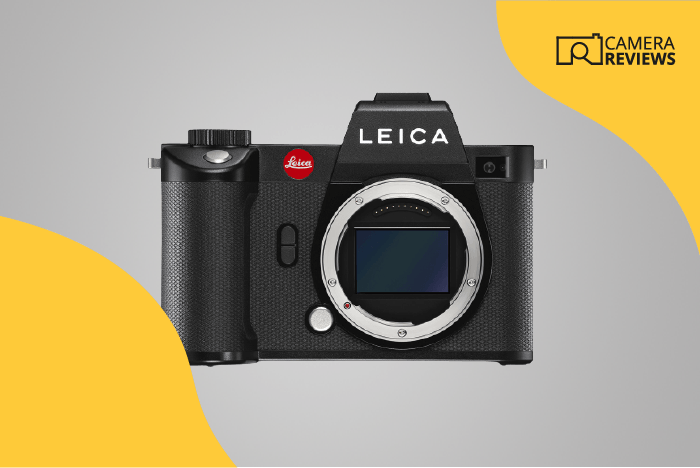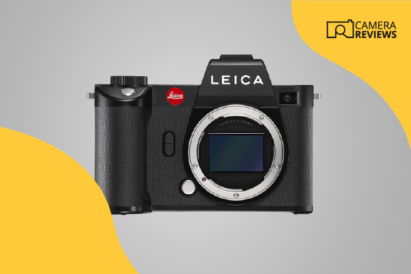The best auto focusing camera at the moment is a mirrorless model. Yes, there are good DSLRs, such as the Canon EOS 1 DX Mark III or the Nikon D850 and D6. But the future is mirrorless!
Mirrorless cameras offer firmware updates. They promise genuine improvements or additions to the feature set. And digital camera manufacturers are increasingly prioritizing investment in this market. That means you’ll have more and better lenses to choose from. And there’ll be more and better cameras to buy in the future.
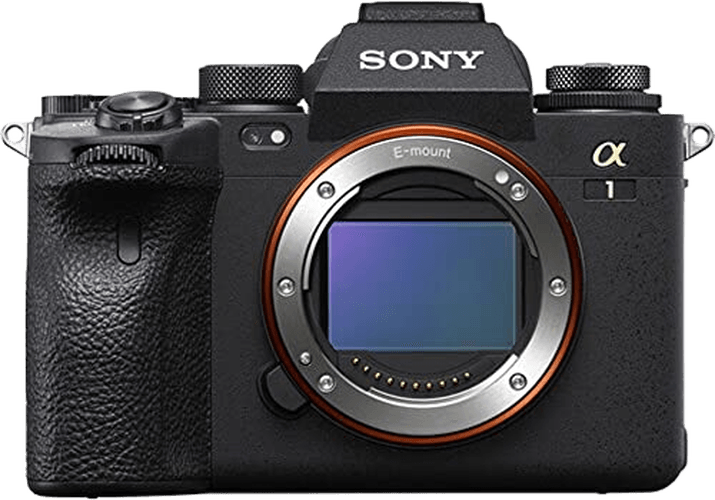
Sony a1
That especially applies to mirrorless autofocus systems. Mirrorless cameras used to use contrast detection rather than phase detection autofocus. This meant their autofocus systems were slower than DSLR full-frame cameras.
But there has been technological progress. And innovations such as face and eye detection and subject tracking have emerged. So the best professional-grade mirrorless cameras are now at the head of the pack. These include the Sony a1, Canon EOS R3, and Nikon Z9.
What is the Best Auto Focusing Camera?
Here’s a quick roundup of all the cameras on our list before we dive into each one in detail.

- High frame rate of 30 fps
- Large sensor captures tons of detail
- Eye tracking (human, animal, and bird)
- Incredible 8K / 30p Ultra HD video

- Impressive 20 fps continuous shooting
- Lightning-fast autofocus
- Great file transferring speeds
- Improved ergonomics
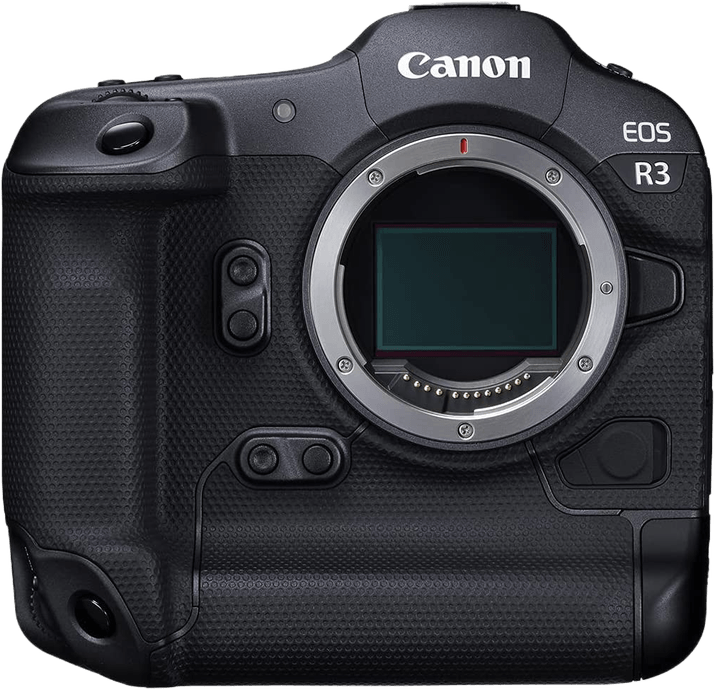
- A high frame rate of 30 fps
- Less noise with BSI stacked sensor
- 8 stops of image stabilization
- 6K / 60p RAW video
- 620-shot battery life
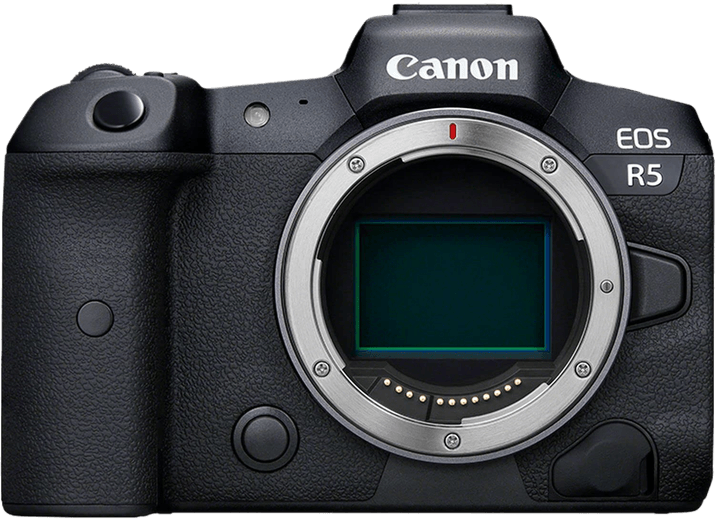
- Large 45 MP sensor
- High frame rate of 20 fps
- In-Body Image Stabilization (IBIS)
- Body, face, eye, and animal tracking
- 8K/30p Ultra HD video
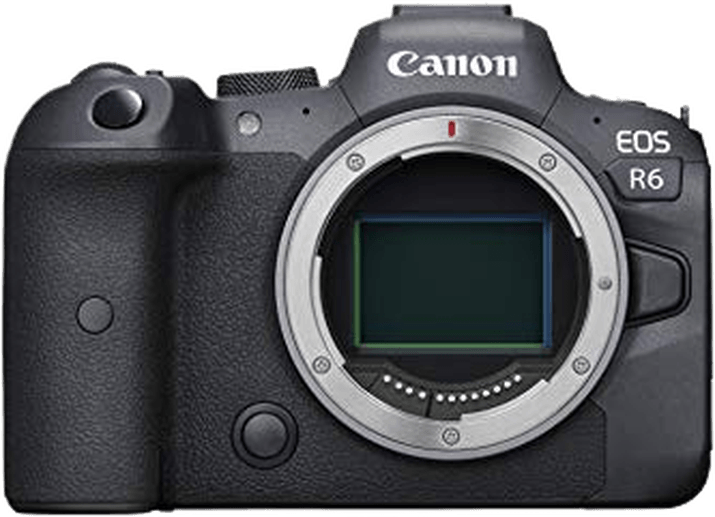
- Relatively affordable
- Excellent in-body image stabilization
- Compact and ergonomic design
- Fantastic expandable ISO range
- Rapid burst speeds
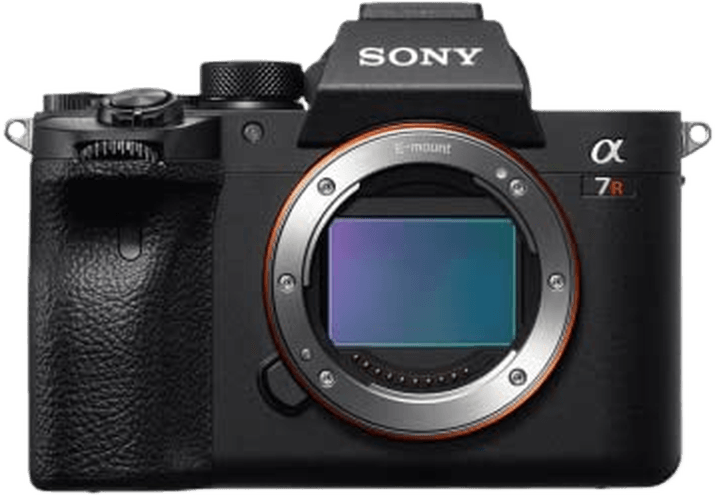
- Super high-resolution sensor
- Stunningly sharp image quality
- Excellent face and eye detection AF
- Large, high-resolution EVF
- Sharp 4K Ultra HD video
- Weather sealing to protect from elements
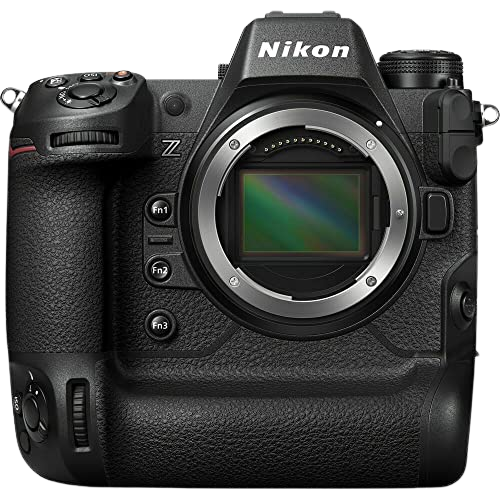
- Ultra-fast image processor
- High, 120 fps compressed frame rate
- No visible rolling shutter
- Excellent battery life
- 8K/60p Ultra HD video
- Unlimited low-resolution recording
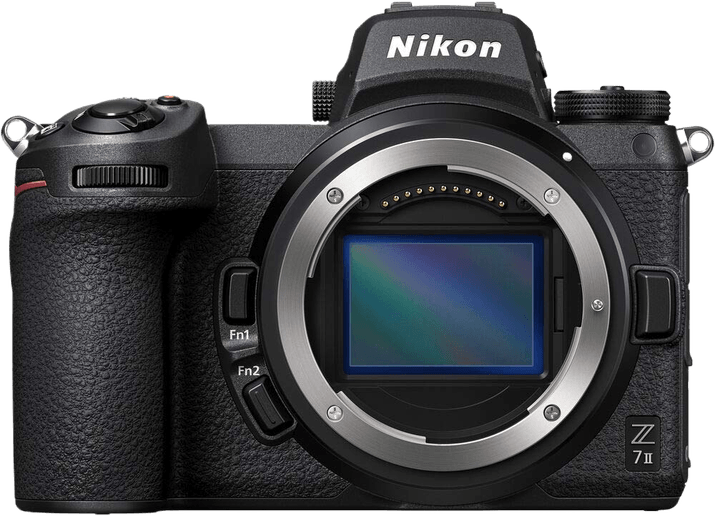
- High-resolution image sensor
- Rapid 1/8000 s shutter speed
- Excellent AF system
- Dual memory card slots
- Great 4K video at 60 fps
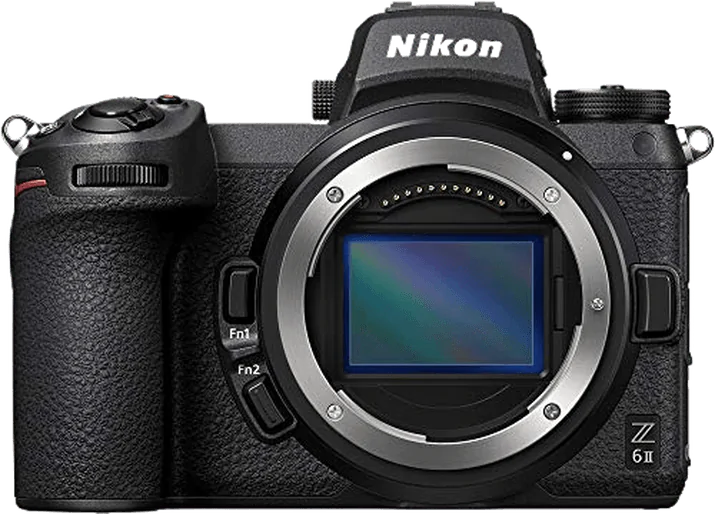
- Excellent low-light focusing
- Lightweight and portable
- Superb low-light dynamic range
- Dual memory card slots
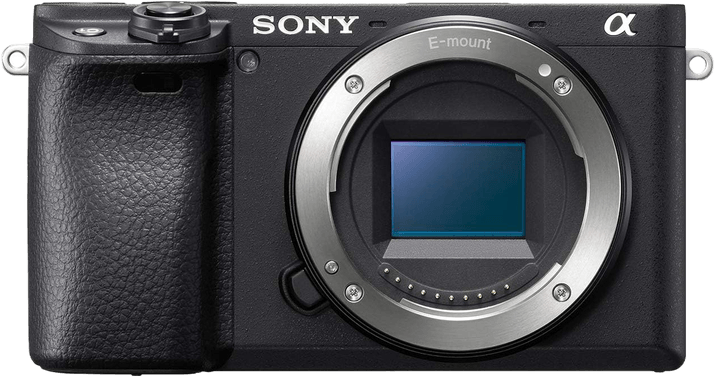
- Superb image quality for APS-C
- Good low-light performance
- Compact camera body
- No time limit for recording video
10 Best Cameras for Autofocus in Detail
1. Sony a1

| Camera Type |
Camera Type
|
| Megapixels |
Megapixels
50.1 MP |
| Sensor Format |
Sensor Format
|
| Sensor Size |
Sensor Size
24 x 35.9 mm
|
| Frame Rate |
Frame Rate
30 fps |
| Autofocus Points |
Autofocus Points
759 |
- Large sensor captures tons of detail
- High frame rate of 30 fps
- Eye tracking (human, animal, and bird)
- Easy customization
- Silent shooting for quiet situations
- Incredible 8K/30p Ultra HD video
- Expensive
- Highest frame rates only for JPEG, HEIF, and lossy compressed RAW files
- Eye tracking only selected manually
- Small rear LCD screen
- No GPS
The Sony a1 is a mirrorless full frame camera. It has the best autofocus system on the market with Real-time Tracking AF and Real-time Eye AF. It’s likely the best model you can buy for wildlife photography. That’s why I have two of them!
It offers a great combination of resolution, frame rate, and buffer size. Plus, it records 8K video and has customizable buttons. The Sony autofocus is “shared” by most of their mirrorless cameras. But it’s at its best in the a1.
Continuous AF (or AF-C) has to carry out thousands of calculations every fraction of a second. That means you need a powerful image processor. And the a1’s upgraded Bionz XR is more than up to the job.
Support for CFexpress Type A cards also means the camera’s not wasting time and energy. Rather than writing to the card and filling up the buffer, it focuses on the next shot!
The a1’s autofocus has many different focus areas (both with and without tracking). And you can choose the best for each situation.
The Wide option covers the whole frame. It works well if you have an isolated subject with no distracting background. But if you have to cope with leaves, branches, or anything like that? You’re better off narrowing the scope to Zone or Expanded Spot.
If you choose any tracking option? You limit the maximum continuous shooting speed to 20 rather than 30 fps (frames per second). But you can get around that by switching on tracking with the AF-ON button.
The other key feature is Eye Detection. If you switch it on and choose Human, Animal, or Bird, it takes priority over the focus area. With 92% coverage. So the camera can follow the eye of the subject across almost the whole frame if necessary.
I must admit that the a1’s autofocus isn’t perfect. I often get shots that are far from sharp. And it’s usually because I’m either shooting into the sun or using a 1.4x or 2.0x teleconverter. It also doesn’t have Eye Control AF, like the Canon R3 (Check out our Sony a1 vs Canon R3 comparison for full specs).
Finally, it’s frustrating that you have to “tell” the autofocus what you’re shooting. Every fraction of a second is important. So toggling between different subjects is the last thing you want to do when you get a good sighting!
But these are only slight quibbles. Just make sure you upgrade to the latest firmware to get the most out of the autofocus system.
2. Sony a9 II

| Camera Type |
Camera Type
|
| Megapixels |
Megapixels
24.2 MP |
| Sensor Format |
Sensor Format
|
| Sensor Size |
Sensor Size
23.8 x 35.6 mm
|
| Frame Rate |
Frame Rate
20 fps |
| Autofocus Points |
Autofocus Points
693 |
- Impressive 20 fps continuous shooting
- Lightning-fast autofocus
- Improved ergonomics
- Great file transferring speeds
- 5-axis in-body image stabilization to counter camera shake
- No in-camera RAW image processing
- Confusing menus
- Battery performance isn't great
- No S-Log video
- Subpar video quality compared to new full-frame cameras
The Sony a9 II full frame mirrorless camera is not quite in the same class as the a1. But it’s still a useful tool for action and sports photography.
The sensor is less than half the size. The burst rate is lower. And you only get 4K video with no picture profiles or log capture tools. But the autofocus system has benefited from a recent firmware update.
Before that, the a9 II offered similar autofocus performance to the Nikon D5 and Canon EOS 1 DX Mark III. But it now has Real-time Tracking AF.
This seamlessly switches between face detection and eye detection. And it almost makes you forget about focus completely! All you need to do is concentrate on framing your subject to get the best composition.
3. Canon EOS R3

| Camera Type |
Camera Type
|
| Megapixels |
Megapixels
24 MP |
| Sensor Format |
Sensor Format
|
| Sensor Size |
Sensor Size
24 x 36 mm
|
| Frame Rate |
Frame Rate
30 fps |
| Autofocus Points |
Autofocus Points
1,053 |
- A high frame rate of 30 fps
- Less noise with BSI stacked sensor
- 8 stops of image stabilization
- 6K / 60p RAW video
- 620-shot battery life
- Relatively expensive
- Low-resolution for some photographers
- No 8K video
- Slowed frame rate with an SD card or low battery
The Canon EOS R3 is the company’s top-rated mirrorless camera. It’s ideal for sports, wildlife, and press photography. It has a relatively small sensor. But Canon’s autofocus technology is very advanced.
The Dual Pixel CMOS AF II autofocus system is excellent. And it offers several innovations. Eye Control AF allows you to place the focus point by simply staring at the subject.
Plus, it has a simulated Optical Viewfinder mode. This shows you the actual scene in front of you rather than the usual WYSIWYG display. A recent firmware update also brings 195 fps shooting—either in JPEG or RAW!
Dual Pixel AF features a deep-learning AF algorithm based on artificial intelligence. This can now detect and track humans, animals, and vehicles. It also works in low light down to -7.5 EV.
Eye Control AF needs to be “trained” by scanning your eye four times. And it’s not designed for fast-moving or erratic subjects. But it’s a neat way of forcing the camera to focus on the right subject in a crowded scene. You don’t have to resort to the joystick or Smart Controller.
The lower pixel count means lower resolution. But it does help control noise better than on the Sony a1. And the fast readout speed gets rid of rolling shutter. You also get a host of other impressive features:
- A huge ISO range
- A fast frame rate and shutter speed
- 8-stop in-body image stabilization (IBIS)
- Blackout-free shooting
- A vari-angle touch screen
- 6K at 60 fps RAW video (with no overheating)
Canon built this machine for speed. So make sure you use a CFexpress Type B card. An SD card reduces the available video formats. And it reduces the frame rate and buffer size.
4. Canon EOS R5
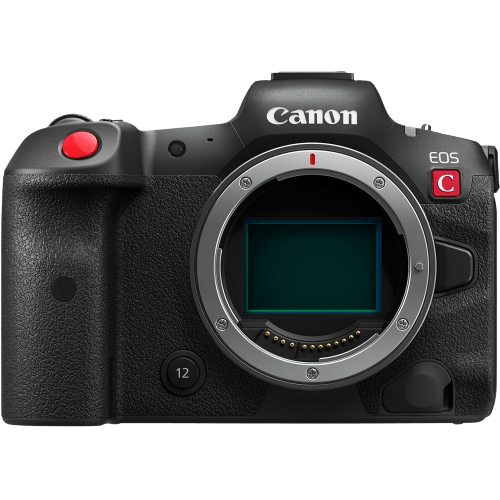
| Camera Type |
Camera Type
|
| Megapixels |
Megapixels
45 MP |
| Sensor Format |
Sensor Format
|
| Sensor Size |
Sensor Size
24 x 36 mm
|
| Frame Rate |
Frame Rate
20 fps |
| Autofocus Points |
Autofocus Points
1,053 |
- The photo/video switch allows you to easily switch between shooting modes
- 5-axis In-camera image stabilization
- Compact and lightweight
- Unlimited video recording due to built-in fan preventing overheating
- Reduced video sizes with Cinema RAW Light modes
- Expensive
- Limited native lens compatibility
- Continuous AF only covers 80% of the image sensor in video mode
- Bigger than the original EOS R5
- Must use an external battery source for the fastest shooting speeds
The Canon EOS R5 has the same Dual Pixel CMOS AF II system as the R3. So it offers the same eye detection and tracking features. The 5,940 AF points cover the entire frame. So you won’t lose your subject if they get close to the edge.
The big advantage of the Canon EOS R5 is the larger sensor. It doesn’t have all the bells and whistles of the R3, such as Eye Control AF and 30 fps continuous shooting.
But it does have a better resolution for portrait and landscape photography. It also has the option of 10-bit HDR photos or 8K video. You also get many other features. These include the following:
- Sensor-shift image stabilization for camera shake
- A vari-angle touch screen for taking pictures at difficult angles
- Weather-sealing to protect the camera body
- 2.4 and 5 GHz Wi-Fi with Bluetooth and FTP connectivity for fast, easy file transfers
5. Canon EOS R6

| Camera Type |
Camera Type
|
| Megapixels |
Megapixels
20.1 MP |
| Sensor Format |
Sensor Format
|
| Sensor Size |
Sensor Size
23.9 x 35.9 mm
|
| Frame Rate |
Frame Rate
20 fps |
| Autofocus Points |
Autofocus Points
1,053 |
- Relatively affordable
- Excellent in-body image stabilization
- Compact and ergonomic design
- Fantastic expandable ISO range
- Rapid burst speeds
- Low megapixel count compared to closest competitors
- Interface is challenging to navigate
- EVF drains the battery
- Camera heats up shooting 4K / 60 fps
The Canon EOS R6 is very much in the same mold as the R3. But it’s designed as more of a hybrid camera for shooting stills and video.
It has the same Dual Pixel AF II system as the other Canon mirrorless cameras. So it offers AI-trained subject tracking and eye detection. The 6,072 AF points also cover 100% of the frame.
It has a lower frame rate and a slightly smaller sensor. This means you can only shoot 4K video. But you can still record 10-bit footage internally or take 10-bit HDR photos in HEIF format. These are both high-quality options. The other problem? It does overheat when shooting video.
You can compare the R6 with the R3 and the R6 with the R5. The electronic viewfinder (EVF) and LCD resolution, and max video bit rate are lower in the R6. But they share most of the other great features. These include the following:
- Focus bracketing and stacking for different focus distances and better depth of field
- An IBIS system
- Touch screen for easy menu control
- Weather-sealing
- Wireless and Bluetooth connections
- Headphone and microphone ports for shooting video
6. Sony a7R IV

| Camera Type |
Camera Type
|
| Megapixels |
Megapixels
61.2 MP |
| Sensor Format |
Sensor Format
|
| Sensor Size |
Sensor Size
23.8 x 35.7 mm
|
| Frame Rate |
Frame Rate
10 fps |
| Autofocus Points |
Autofocus Points
425 |
- Super high-resolution sensor
- Stunningly sharp image quality
- Excellent face and eye detection AF
- Large, high-resolution EVF
- Sharp 4K Ultra HD video
- Weather sealing to protect from elements
- Long write times
- Poor AF at high frame rates
- No pixel-shift motion compensation
- Complicated menus
- Limited, laggy touchscreen functionality
The autofocus of the Sony a7R IV lags behind the best Sony and Canon models. And shooting is hardly blackout-free. But it makes up for it by having many customization options. Plus, it has more megapixels than any camera on this list.
This makes it more suitable for landscape and portrait photographers. The extra resolution allows you to shoot subsampled or oversampled 4K video. (Color compressed video or full resolution changed to the required one). And you can produce 4-shot or 16-shot high-resolution composite images of static subjects.
The AF system has 567 phase-detection focus points. It covers 99.7% of the frame vertically and 74% horizontally. It also has the same Real-time Tracking AF you get with the a1 and a9 II. That’s great for video. But it doesn’t work quite as well in burst mode, in low light, or when shooting into the sun.
Focus speed improves in low light if you engage Focus Priority under Aperture Drive in AF. This forces the camera to open the aperture when focusing and lets in more light. The downside is extra shutter lag. Before taking the shot, the lens struggles to close the iris to the right aperture.
Unfortunately, the a7R IV only supports SD UHS-II cards. That means the frame rate noticeably drops when shooting uncompressed RAW files. And the buffer generally takes a long time to clear.
7. Nikon Z9

| Camera Type |
Camera Type
|
| Megapixels |
Megapixels
46 MP |
| Sensor Format |
Sensor Format
|
| Sensor Size |
Sensor Size
23.9 x 35.9 mm
|
| Frame Rate |
Frame Rate
30 fps |
| Autofocus Points |
Autofocus Points
493 |
- Ultra-fast image processor
- High, 120 fps compressed frame rate
- No visible rolling shutter
- Excellent battery life
- 8K/60p Ultra HD video
- Unlimited low-resolution recording
- Only 11 MP files at the highest frame
- You can only shoot RAW files at 20 fps
- Tracking can fail with erratic movement
- IBIS not as good as Canon R3
- Autofocus isn't as good for video
- The screen doesn't fully articulate
The Nikon Z9 is the company’s flagship mirrorless camera. It has a solid autofocus system. Nikon designed it for wildlife and sports photography. It offers high resolution, fast frame rates, and 8K video capture with plenty of options. But the integrated grip makes it rather bulky and heavy.
The Z9 replicates the Nikon D6’s autofocus modes. It has the excellent 3D tracking I used to use. But the results are 40 to 115% faster (depending on the frame rate). The zones now extend across the whole frame. Plus, you can even design your own custom focus area.
You also get integrated face detection and subject tracking. And you have a couple of options to improve them. You can change either the blocked shot AF response time or the subject’s type of motion.
The 2.0 firmware update brings several features. These include the following:
- Custom focus area shapes for more control
- Waveform display to verify and watch your exposure
- A pre-release burst option to capture up to a second of action while the shutter is half-pressed
- A 120 Hz viewfinder refresh rate for a smoother view
- Excellent 8K at 60 fps RAW video
8. Nikon Z7 II

| Camera Type |
Camera Type
|
| Megapixels |
Megapixels
45.75 MP |
| Sensor Format |
Sensor Format
|
| Sensor Size |
Sensor Size
23.9 x 35.9 mm
|
| Frame Rate |
Frame Rate
10 fps |
| Autofocus Points |
Autofocus Points
439 |
- High-resolution image sensor
- Rapid 1/8000 s shutter speed
- Excellent AF system
- Dual memory card slots
- Great 4K video at 60 fps
- Disappointing battery life of 420 shots
- Tilt screen has limited flexibility
- Limited lens range
- Slow frame rate of 10 fps in continuous shooting speed
The mirrorless Nikon Z7 II is just a small step down from the Z9. But it has capable autofocus. It also offers great image quality and good 4K video specifications with only a 1.08x crop.
The high-resolution sensor makes it a good tool for landscape or portrait work. And the low native ISO of 64 adds dynamic range. It also has dual card slots (unlike the Z7). But problems with the autofocus mean it’s not quite so suited to action shots.
Nikon updated the AF system from the original Z7. In the “old days,” you had to choose human and animal detection separately in the I Menu. But now they’re built into the Wide-area and Auto-area AF modes.
In theory, that means the camera “knows where to look” for the subject. But subject detection is still separate from tracking. So this adds a step when choosing your AF settings.
Face and eye detection work well. But the AF is sometimes prone to front-focus. Subject tracking also works 100% of the time when subjects approach you directly.
But it’s better when dealing with a whole subject. Trying to follow a particular spot on your selected subject proves difficult. It also sometimes tries to refocus in the middle of tracking—even with a static subject.
Overall, the Z7 II offers a good package of features:
- IBIS
- Improved battery life
- Convenient USB charging
- Fast XQD and CFexpress card support
But the viewfinder resolution doesn’t compare with the a1. And you need an external recorder for a higher-quality 10-bit Log or RAW video.
9. Nikon Z6 II

| Camera Type |
Camera Type
|
| Megapixels |
Megapixels
24.5 MP |
| Sensor Format |
Sensor Format
|
| Sensor Size |
Sensor Size
35.9 x 23.9 mm
|
| Frame Rate |
Frame Rate
14 fps |
| Autofocus Points |
Autofocus Points
273 |
- Excellent low-light focusing
- Lightweight and portable
- Superb low-light dynamic range
- Dual memory card slots
- Autofocus can be slow
- Relatively short battery life
- Lower MP count than main competitors
- Needs more customizable buttons
The Nikon Z6 II is a good mirrorless all-rounder. But the AF system is a bit complicated.
Its sensor is smaller than the one on the Z7 II. And the battery life is shorter. But the frame rate is higher. And you still get 4K video. Plus, it’s reliable and comfortable to use with a weather-sealed body.
The updated Z6 has more processing power than the original version. This helps the autofocus system. It works just as well in photo and video mode.
And the algorithm is good at finding subjects again after they look away. But the AF system doesn’t quite match the nearest competitors from Sony and Canon.
The Z6 II has the same problem as the Z7 II—the camera won’t use face or eye detection when tracking a human subject. That’s a result of how Nikon designed the menu system.
And you can’t even assign different AF modes to custom buttons as you can on their DSLRs. With Canon and Sony models, the camera “knows” it should keep following the eye or face of the subject. That’s even if it moves outside the chosen focus area in tracking mode.
Apart from the AF system? The battery life is average at best. RAW video resolution is lower than it should be due to subsampling. Plus, you need an external recorder for 10-bit Log or Hybrid Log Gamma (HLG) video.
But the Z6 II still provides excellent image quality in a compact and solidly-built body with Wi-Fi/Bluetooth connections and an optional vertical grip.
10. Sony a6400

| Camera Type |
Camera Type
|
| Megapixels |
Megapixels
24.2 MP |
| Sensor Format |
Sensor Format
|
| Sensor Size |
Sensor Size
15.6 x 23.5 mm
|
| Frame Rate |
Frame Rate
11 fps |
| Autofocus Points |
Autofocus Points
425 |
- Superb image quality for APS-C
- Good low-light performance
- Compact camera body
- No time limit for recording video
- No in-camera RAW image editing
- No in-body image stabilization
- Screen tilts but no further articulation
- Complicated menu system
You might be surprised that the APS-C compact Sony a6400 makes it onto this list. But it’s all down to the autofocus system. This is one of the fastest on the market. Sony claims it can focus in only 0.02 s!
Autofocus is easy to set up and very effective. It’s helped by the new Bionz X image processor from the a9. It has a 425-point phase-detection AF system with Real-Time Tracking. This means the camera seamlessly switches… between subject tracking, face detection, and Eye AF.
The hit rate is good, whether or not you’re shooting in Live View. But some of the AF options are confusing or unnecessary.
Apart from that, it offers the following:
- Good JPEG and RAW image quality
- A wide ISO range
- Excellent unlimited 4K video
- A decent burst rate
- A compact, lightweight body.
It also offers a built-in flash, weather-sealing, and a tilting screen. Plus, it has convenient USB charging and Wi-Fi with NFC and Bluetooth connections.
On the downside? The auto white balance (AWB) has a cool bias on JPEGs. There’s no in-body image stabilization. The SD slot is only UHS-I. And the only RAW option is lossy compressed.
With video, the 4K at 30 fps format comes with a crop, and rolling shutter is obvious. Plus, the camera doesn’t “remember” exposure settings when you switch between stills and video.
Our Verdict
A large part of the reason I switched from DSLR to mirrorless cameras is the autofocus system. I’m a wildlife photographer. And the advent of face and eye detection and tracking was a game-changer. I wanted the best platform to capture action shots of animals in the bush. And it delivers!

Sony a1
I have no regrets. The Sony a1 is a great camera. And I’m sure I’ll enjoy future firmware updates. They’ll enhance its impressive autofocus capabilities even further.
Nikon, and especially Canon, are catching up. And the performance differences between top cameras are getting harder and harder to spot.
The Sony a1, Canon R3, and Nikon Z9 might be the flagship models from the best camera brands today. But who knows what features and inventions are yet to come?
Best Auto Focusing Cameras FAQs
These are the most common questions about buying a good autofocus camera. We hope it helps answer your own questions!
What is the best autofocus camera for video?
The best autofocus systems are on Sony cameras. And the Sony a1 offers the best with 8K video. But it’s not cheap. So the a7R IV might be more suitable. And the a7S III is also great for vlogging.

Which mirrorless camera has the best autofocus?
It’s getting tighter and tighter between the main contenders. But Sony cameras had a head start. And Canon has only started to catch up in the last couple of years. That means the Sony a1 is probably just ahead of the Canon R3. But the R3 does have some cool features like Eye Control AF.
Which camera has the fastest autofocus?
It’s hard to measure these things independently. But Sony claims that title for the a6400. It apparently finds focus in only 0.02 s!
What is the fastest autofocus DSLR?
The Canon EOS 1 DX Mark III has the company’s excellent Dual Pixel AF system. And it works in Live View like mirrorless cameras. For Nikon, the D850 and D6 have great autofocus systems. They track moving subjects well, especially when using 3D continuous AF.
What is eye detection?
Eye detection is a feature that’s now common on modern mirrorless cameras. It’s when the camera can find the nearest eye of any subject and focus on it. That’s whether it belongs to a human, animal, or even a bird. If you have a Sony or Canon camera, it tracks it across the frame… whatever autofocus mode you’re in. The same goes for face detection.


